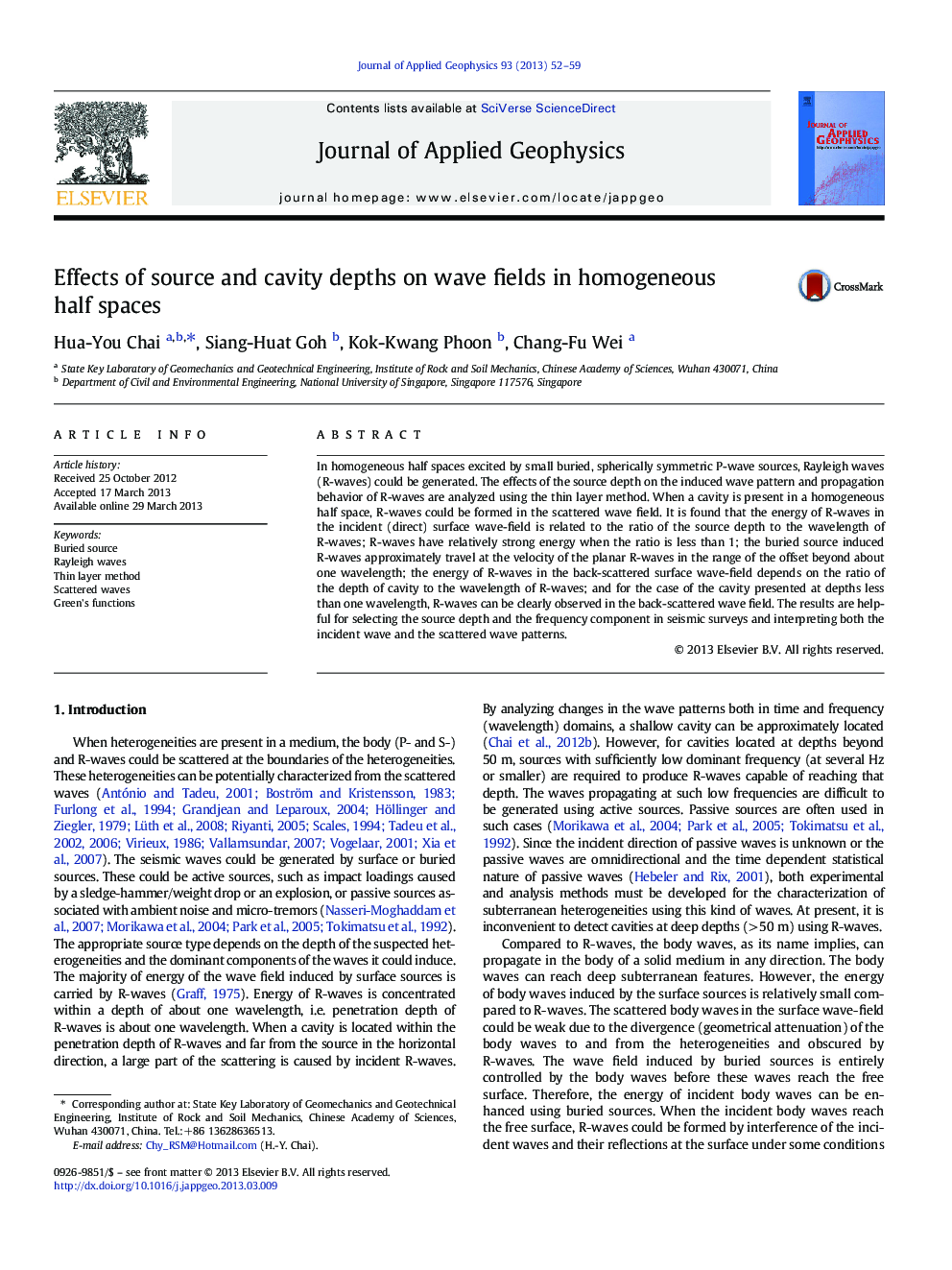| Article ID | Journal | Published Year | Pages | File Type |
|---|---|---|---|---|
| 4740332 | Journal of Applied Geophysics | 2013 | 8 Pages |
•Effect of source depth on energy of R-waves in surface wave-field is studied.•Effect of buried sources on propagation behavior of R-waves is studied.•Ratio of source depth to R-waves wavelength to suppress R-waves is proposed.•Effect of cavity depth on R-waves in the back-scattered surface field is studied.
In homogeneous half spaces excited by small buried, spherically symmetric P-wave sources, Rayleigh waves (R-waves) could be generated. The effects of the source depth on the induced wave pattern and propagation behavior of R-waves are analyzed using the thin layer method. When a cavity is present in a homogeneous half space, R-waves could be formed in the scattered wave field. It is found that the energy of R-waves in the incident (direct) surface wave-field is related to the ratio of the source depth to the wavelength of R-waves; R-waves have relatively strong energy when the ratio is less than 1; the buried source induced R-waves approximately travel at the velocity of the planar R-waves in the range of the offset beyond about one wavelength; the energy of R-waves in the back-scattered surface wave-field depends on the ratio of the depth of cavity to the wavelength of R-waves; and for the case of the cavity presented at depths less than one wavelength, R-waves can be clearly observed in the back-scattered wave field. The results are helpful for selecting the source depth and the frequency component in seismic surveys and interpreting both the incident wave and the scattered wave patterns.
